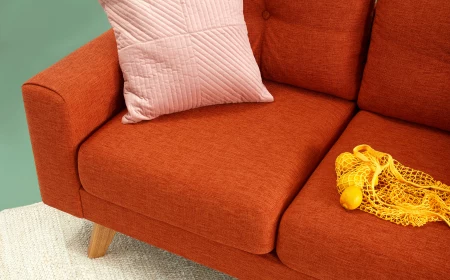The Real-Deal Guide to Moving Heavy Furniture Without Wrecking Your Back (or Your House)
I’ve seen some wild things in the moving world. A king-size mattress hopelessly wedged in a spiral staircase. A beautiful antique armoire getting a massive chip because someone wore slippery sneakers. Honestly, I’ve helped countless people who tried to tackle a move themselves, only to call in the pros mid-day, surrounded by scratched floors and pulled muscles.
In this article
Moving heavy furniture isn’t really about being the strongest person in the room. It’s a craft. It’s about using physics, smart planning, and proper technique. This is what separates a smooth, successful move from a total disaster. When I first got into this business, I learned from seasoned experts that every piece has a balance point and every move needs a plan.
So, what I want to share isn’t a list of gimmicky ‘hacks.’ This is the actual methodology the pros use every day to move heavy, expensive, and awkward items safely. This is how you protect your stuff, your home, and most importantly, your body.
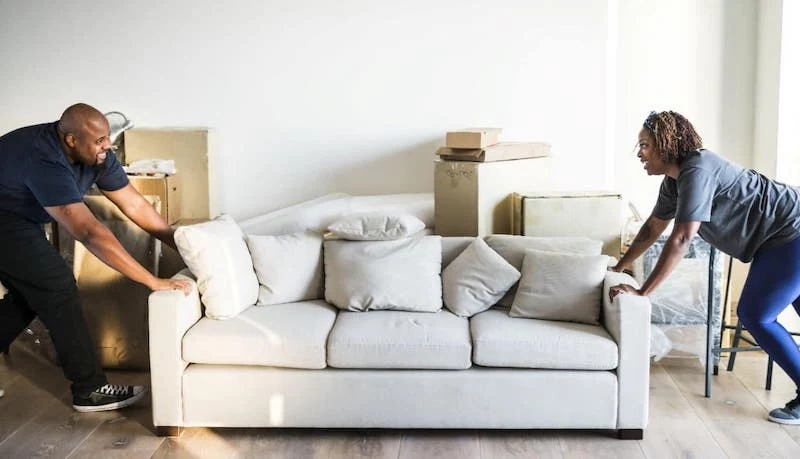
First Things First: Prep Work is Everything
Let’s be real: the biggest mistakes happen before you even lay a hand on the furniture. A professional move is at least 50% planning and preparation. Rushing this stage is how you end up with a sofa stuck in a hallway or a dresser that feels like it’s bolted to the floor.
Step 1: Empty It. All of It. Seriously.
This sounds like a no-brainer, but it’s the number one corner people try to cut. They figure leaving clothes in a dresser will save a bit of time. This is a huge mistake. First, it adds a ton of unstable weight. Clothes and other items can shift around, throwing off the balance of the piece right in the middle of a carry, which is incredibly dangerous, especially on stairs.
Second, the contents can actually damage the furniture from the inside. A heavy book left in a desk drawer can slam around and break the joinery. We once moved a gorgeous credenza for a client who swore it was empty. Halfway down the front steps, we heard a sickening thud and a crack. A small, heavy paperweight they’d forgotten had rolled forward and smashed right through the front veneer. A costly and totally avoidable repair.

So, empty everything. Take the drawers completely out if you can. After removing them, we often wrap the empty frame with plastic stretch wrap to keep it rigid and prevent it from flexing during the move.
Heads up: For a big piece like a heavy dresser, expect this emptying, cleaning, and wrapping process to take a solid 30-45 minutes. Don’t rush it!
Step 2: Smart Disassembly
A lot of modern furniture, especially the flat-pack stuff, isn’t built to be moved in one piece. The joints just can’t handle the twisting forces of being carried. Trying to move a large particleboard wardrobe fully assembled is just asking for it to crumble.
Look at any piece and see what can come off easily. This usually includes:
- Legs: Table and sofa legs are notorious for getting snagged on door frames. Taking them off is a quick win.
- Shelves: Even if they seem fixed, check for screws. At the very least, take out all the adjustable shelf pins—they fall out constantly and are a nightmare to replace.
- Doors and Knobs: Cabinet doors can swing open at the worst possible moment. If you can’t remove them, use painter’s tape (not packing tape, which can strip the finish) to secure them.
Quick Win: If you’re short on time, do this one thing: Unscrew all knobs and handles. It takes five minutes and will save your walls and doorways from dozens of potential scratches and gouges.
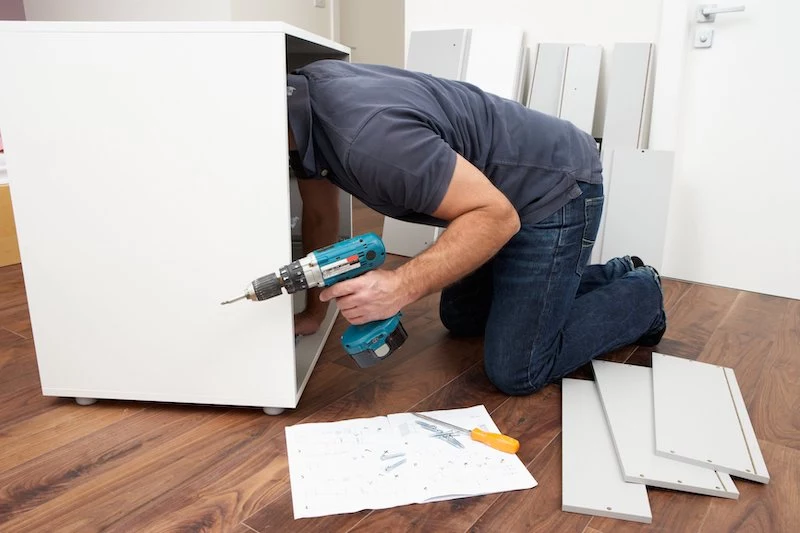
And here’s a pro tip that will save your sanity later: keep all your hardware organized. I use small, labeled zip-top bags and tape them securely to the underside of the piece they belong to. No more mystery screws during reassembly!
Step 3: Plan Your Escape Route
Never, ever start moving without knowing exactly where you’re going. Walk the entire path, from start to finish. Measure your doorways, hallways, and stairwells. And it’s not just about width! A 30-inch-wide dresser might not fit through a standard 32-inch door if the hallway leading to it is only 36 inches wide, preventing you from making the turn.
Visualize the furniture moving along the path. Look for low-hanging lights, tight corners, and annoying thresholds. Clear the way by removing rugs, shoes, and anything else that could trip you up. A clear path is a safe path. We also prop open all the doors along the route so no one is fumbling with a doorknob while holding a heavy load.

The Tools & Techniques That Beat Brute Force
Okay, let’s talk about the gear that makes the magic happen. This isn’t about being the strongest; it’s about being the smartest. Understanding a bit of physics goes a long way.
Sliders, Dollies, and Straps, Oh My!
Friction is the enemy when you’re trying to slide something heavy. This is where sliders are a game-changer. But you have to use the right kind, or you’ll do more harm than good.
- For Hardwood, Tile, or Vinyl: You need soft, felt-bottomed sliders. They glide beautifully and protect your floors from any scratches.
- For Carpet and Rugs: This is where you use the hard plastic sliders. They slide over the carpet fibers instead of getting snagged.
A word of warning, and I’m speaking from experience here. Early in my career, I grabbed a plastic slider for a quick move on a brand-new hardwood floor. The long, ugly scratch it left was a very expensive lesson in paying attention. Don’t be me!
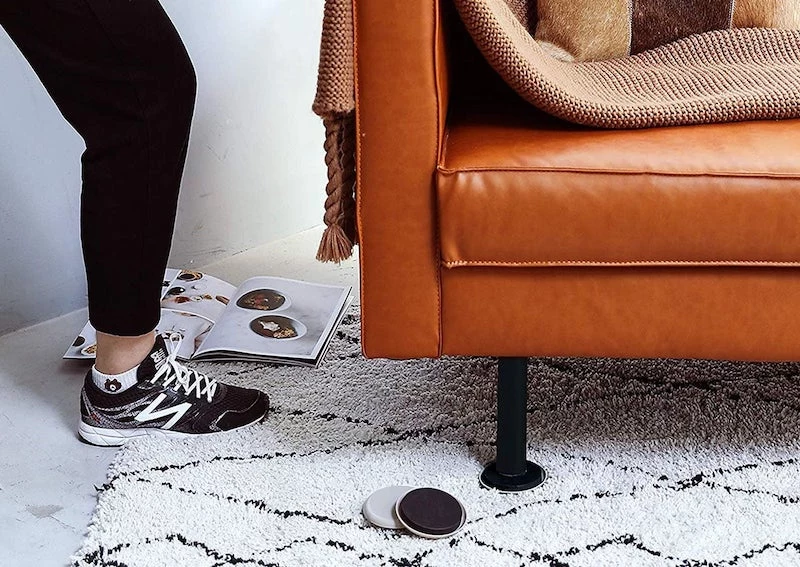
And then there are dollies. The two-wheeled appliance dolly (or hand truck) is essential for tall, heavy items like fridges. You can rent one from places like U-Haul or Home Depot for about $15-$25 a day, which is way better than buying one for $100+ if you don’t move often. The flat, four-wheeled furniture dollies are perfect for moving things like credenzas across a flat surface, but they are useless on stairs.
The Mover’s Essential Toolkit
Want to gear up like a pro? It’s cheaper than you think and makes a world of difference. Here’s a quick shopping list:
- Work Gloves with Good Grip: An absolute must. ($10-$20)
- Furniture Sliders: Get a variety pack with both felt and plastic bottoms. ($15)
- Moving Straps (Shoulder Dolly): For two people, these leverage-based straps are incredible for dressers and sofas. They cost between $30 and $50 and are worth every single penny. Find them online or at moving supply stores.
- Painter’s Tape & Stretch Wrap: For securing doors and drawers. ($5 for tape, $15 for wrap)
- Labeled Ziploc Bags: For all those screws and bolts. ($5)
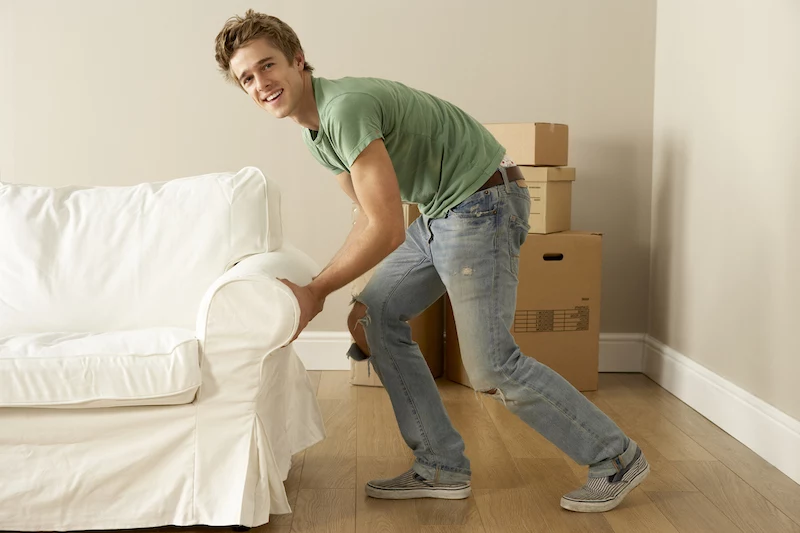
How to Lift and Carry Without Injury
Once you’re prepped, it’s go time. You’ve probably heard “lift with your legs, not your back” a million times. Here’s what that actually means in practice:
- Get a Wide Stance: Feet shoulder-width apart, one slightly in front of the other.
- Get Low: Squat down by bending your knees and hips. Keep your back straight and upright. Do NOT bend at the waist.
- Get a Solid Grip: Grip the item from the bottom. You can pull up with much more power than you can pinch from the sides.
- Lift Smoothly: Drive up with your legs and exhale as you lift. Keep the item close to your body.
- Communicate! If you’re lifting with a partner, use a clear command. A simple “Ready? One, two, three, LIFT!” prevents injuries.
A serious heads-up: Most injuries happen when putting things down. People get tired and just… drop it. Lower the item with the exact same technique, bending at the knees and keeping your back straight.
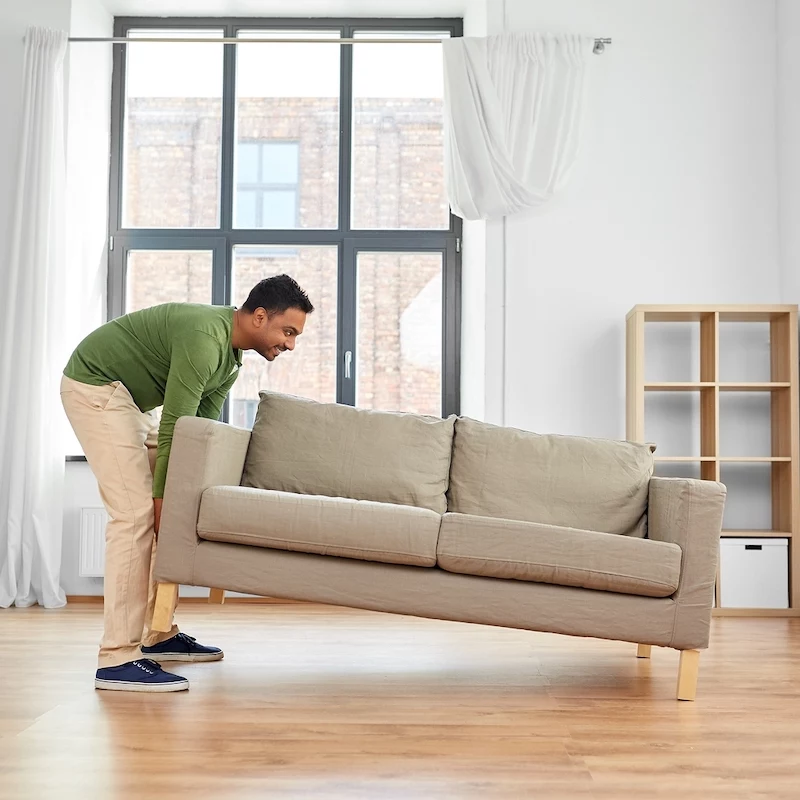
Getting a big piece of furniture through a tight spot is a geometry puzzle. Here are the two most common problems and how to solve them.
The Classic Couch-in-the-Stairwell Problem
Ah, the pivot. The solution is almost always to go vertical. A standard 84-inch sofa is too long to make a 90-degree turn on a narrow stairwell landing. But if you stand it on its end, you can spin it right around. We call it the “L-method,” and it’s easier than it sounds:
- Carry the couch horizontally to the landing.
- Tip it backward about 45 degrees, then continue to stand it completely up on its end so it’s vertical.
- Now that its footprint is small, pivot it 90 degrees around the corner.
- Carefully lower it back down to a carrying position and continue on your way.
Tall Items vs. Doorways
For a tall bookcase or armoire, you have to tilt it backward to get it through a standard doorway. This lowers its height. The person on the front (low) side walks backward through the door, while the person on the back (high) side controls the tilt. Communication is key here—agree on how far you’ll tilt beforehand.
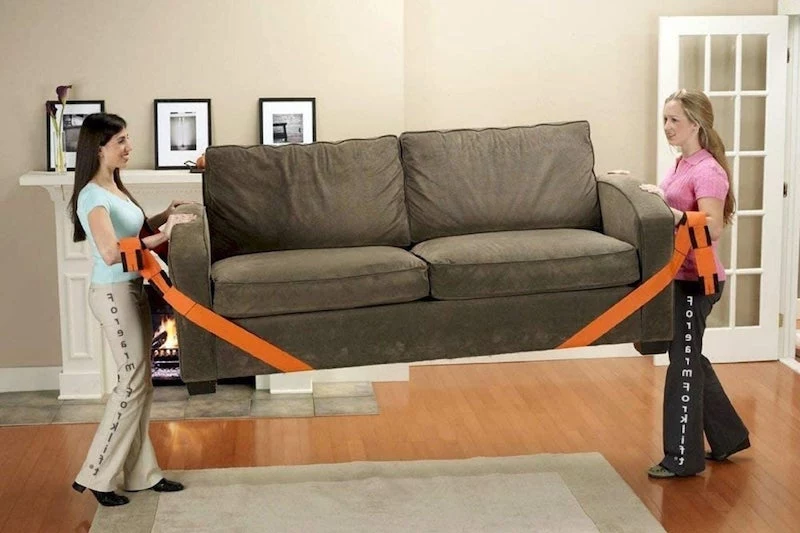
We always put a moving blanket down in the doorway to protect the threshold and let the piece slide a bit as it goes through.
When to Just Call a Professional
Look, some things are just not worth the risk. If you look at an item and your first thought is, “I have no idea how to even start,” that’s your sign.
- Pianos: Do not move a piano yourself. Period. They are insanely heavy, their weight is all off-balance, and their guts are delicate. Even as a professional mover, I subcontract piano moves to specialists. Hiring a dedicated piano mover can cost between $300 and $600, and it’s worth every cent.
- Giant Glass or Marble Tabletops: These need to be crated or wrapped in multiple blankets and ALWAYS carried on their edge, like a pane of glass. Carrying them flat puts too much stress on the center, and they can snap.
- Sleeper Sofas & Recliners: These are deceptively heavy because of their internal metal parts. Take off the mattress from the sleeper and tie the mechanism shut so it doesn’t spring open mid-move.
My rule of thumb is this: if dropping it would be a financial or emotional catastrophe, just hire an experienced crew. It’s cheaper than a new armoire or a trip to the emergency room.
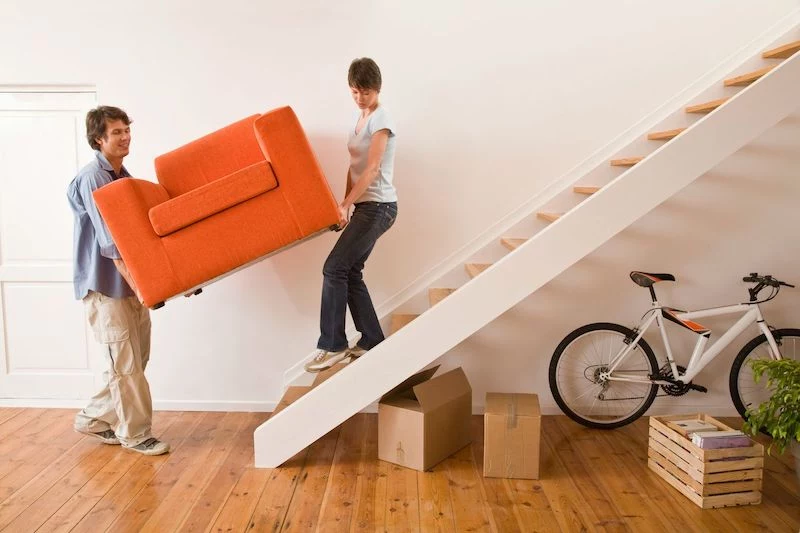
And please, if an item starts to fall, yell a warning and GET OUT OF THE WAY. Your instinct will be to save it. Fight that instinct. A piece of wood can be fixed. Your spine cannot. It is never, ever worth it.
Inspirational Gallery
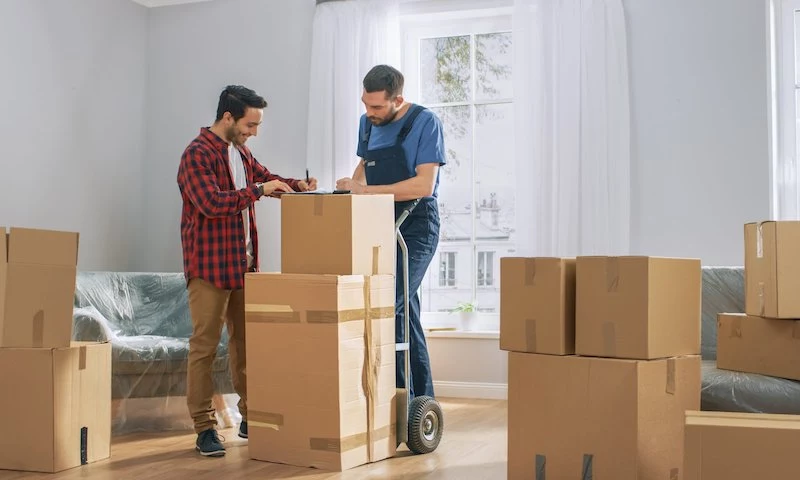
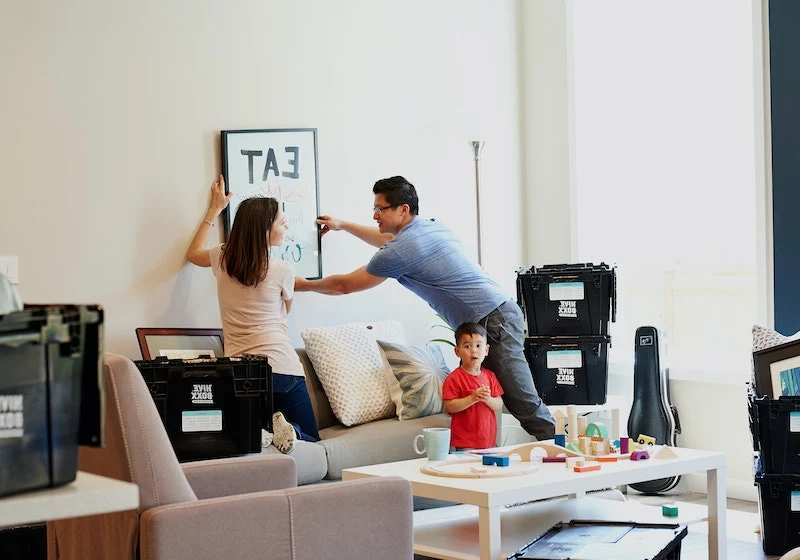
What’s the real difference between the dollies you can rent?
It’s all about matching the tool to the object. A common mistake is using the wrong one and making the job harder and more dangerous.
- The Upright Dolly (Appliance Dolly): This two-wheeled workhorse is for tall, heavy items like refrigerators, filing cabinets, or stacked boxes. Use the strap to secure the load, then tilt it back to its balance point and roll.
- The Flat Dolly (Furniture Dolly): This is a simple, four-wheeled platform. It’s ideal for wide, bulky, or awkwardly shaped items like dressers, credenzas, and large armchairs that are difficult to carry.
According to moving industry data, floor damage is one of the top three most common insurance claims, often costing hundreds to repair.
Pros don’t just ‘lift with their legs’; they protect the environment. Before moving the first item, lay down protective floor runners, like Ram Board, on main pathways. A cheap alternative is to break down large cardboard boxes and tape them securely to the floor. It’s the five minutes of prep that saves you from a weekend of floor refinishing.




